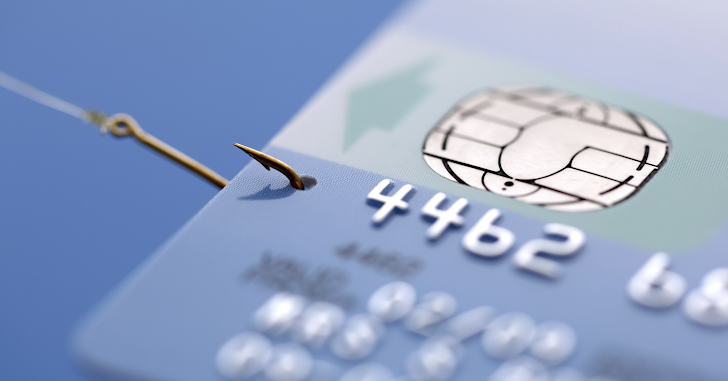What Is a Credit Card Data Breach?
A data breach can be defined as an incident in which sensitive information, such as confidential personal information that you may have saved with a merchant, is stolen. Such data could include your credit card number, email password, full name, address, etc.
What is a Data Breach?
A data breach is when sensitive information such as confidential personal information you’ve entrusted to a company is stolen. This data could include your credit card account numbers, email password and Social Security number.
A data breach is a type of cyber attack that can be defined as a security incident in which personal information is accessed without authorisation from the individual. Such attacks may happen at an individual level through phishing emails, or at an organisational level, like the data breach at Equifax that exposed the personal information of thousands of individuals.
How Credit Card Data Breach can affect you indirectly?
Stolen Usernames and Passwords
Stolen usernames and passwords from a free blog site may not impact you at all. However, if the details pertain to your bank account or credit card account, it is definitely a risk. Losing the login details for your email account is also high-risk, as fraudsters can intercept important information from your email to defraud you.
In case you suspect your login details have been compromised, do go ahead and change your password immediately. It is, anyway, recommended to change your passwords periodically to keep your accounts safe.
Stolen Email Addresses
While your email address isn’t enough for a fraudster to commit a credit card fraud, if your email id has been stolen in a credit card data breach, the thief might try to phish information from you by sending fake emails that appear to be from legitimate businesses.
We urge you not to click on any such emails, however genuine they may seem, before contacting the concerned financial institution. It is also recommended to make any payments directly from the merchant’s site rather than accessing the credit card payment link from your email after a breach has been announced.
Stolen Debit and Credit Card Numbers
Once again, stolen credit or debit card numbers may not be enough to commit fraud. A thief also requires additional information, such as your name, expiry date, and the CVV that’s printed on the backside of the card. However, if all this information is stolen in a credit card data breach, the thief could use it to create a fake card and make fraudulent purchases. Encrypted pins may also be taken in a credit card data breach, and the threat of fraud depends upon the level of encryption used by the merchant. In case your credit or debit card number is stolen, do monitor your credit card activity regularly and report any unauthorised charges immediately to your credit card issuer to limit your liability for the theft.
7 Ways to Protect Against Credit Card Hacks
1. Get a Replacement Card
If you’ve been told that you’re part of a data breach, tell the company that you need a new card immediately. You’re not likely to get any pushback from the already embarrassed company. But if you do, don’t back down.
2. Check your Account Online
Don’t wait for your statement to arrive before you check it monitor your account regularly online. Keep checking daily for at least 30 days, even after you get a new card. If you find a suspicious charge, dispute it immediately.
3. Freeze your Credit
If you are caught up in a data breach, call each of the three main credit bureaus (Equifax, Experian, and TransUnion) and request that your credit report be frozen. Freezing means that no one will be able to access your credit report without your approval. Creditors likely won’t approve an application without having access to your credit report.
4. Protect your Credit Score
If your personal information is stolen, thieves can create new accounts in your name that may bring your credit score down. Therefore, it is vital to inform the major credit reporting bureaus, such as CIBIL and Equifax, of the theft and ask them to place a fraud alert on your name. This way, if anyone tries to use your financial identity, say to get a new credit card, you will be instantly alerted and can prevent the fraud from happening.
5. Place a Fraud Alert
An alternative and less drastic step to freezing your credit is to place a fraud alert on your credit profile with the credit bureaus. A fraud alert can protect your credit history from unauthorized access for one year, after which it can be renewed. A fraud alert won’t completely lock down your credit reports the way that a credit freeze does, but it does require creditors and lenders to take the extra step of verifying your identity before authorizing new lines of credit in your name.
6. Be Smart about Passwords
Simply employing all the password rules won’t prevent a breach, but since you don’t know exactly what information thieves are looking for, it can’t hurt. Use strong passwords (random letters and numbers), and change them frequently. Remember, if it’s easy for you to remember, then it’s probably easy for a savvy cyber thief to crack.
7. Review your Bank Statement Regularly
Most banks send automatic alerts each time there’s a transaction linked to your account. In case you have not subscribed for SMS or email alert service, do it immediately so that you are notified of any fraudulent transactions. You must also check your bank statement for any dubious charges and inform the bank immediately if you see any suspicious activity. Remember, most banks only give you up to 48 hours to notify any fraudulent activity on your debit card – so being vigilant is the best way to protect your financial health.

